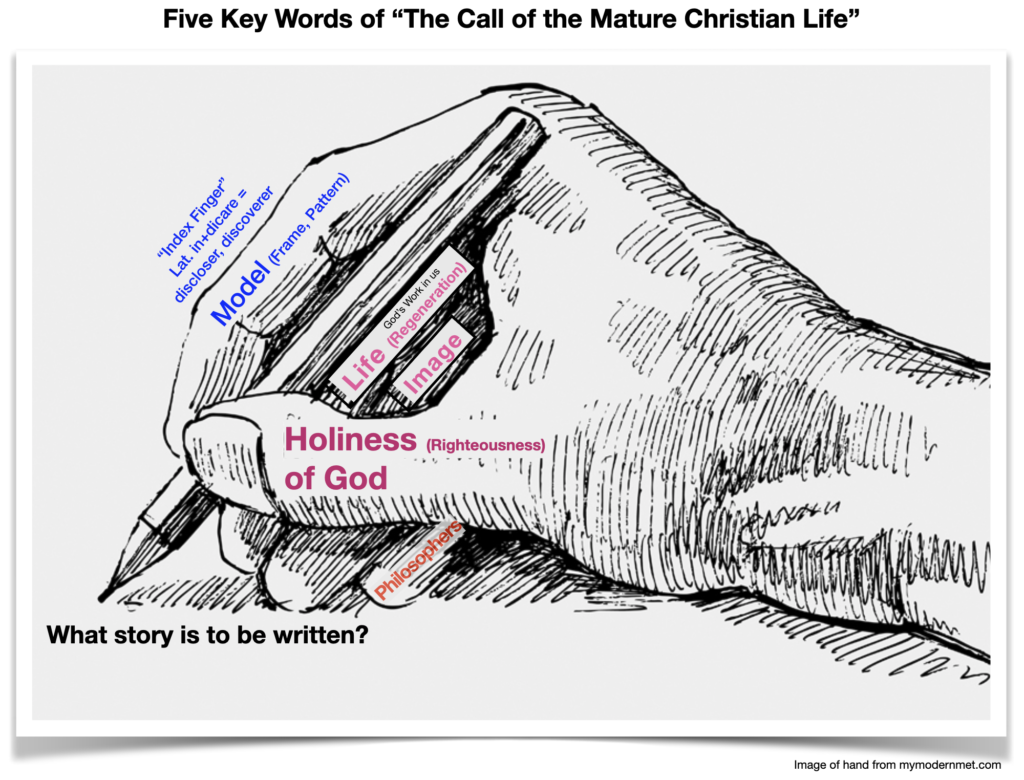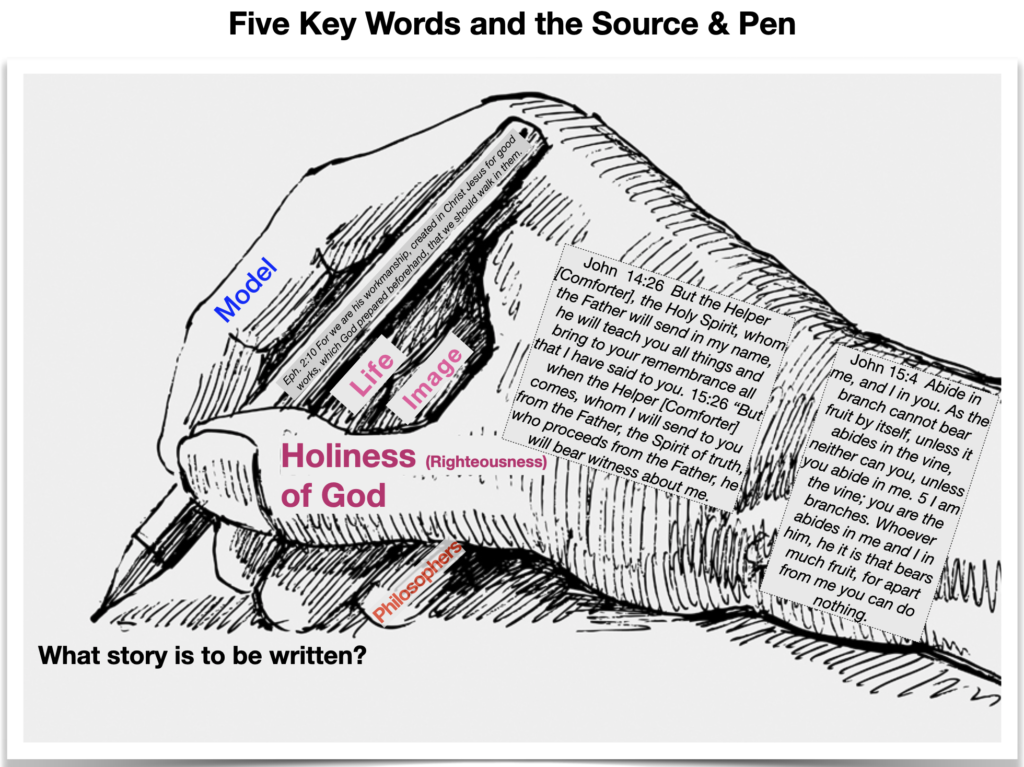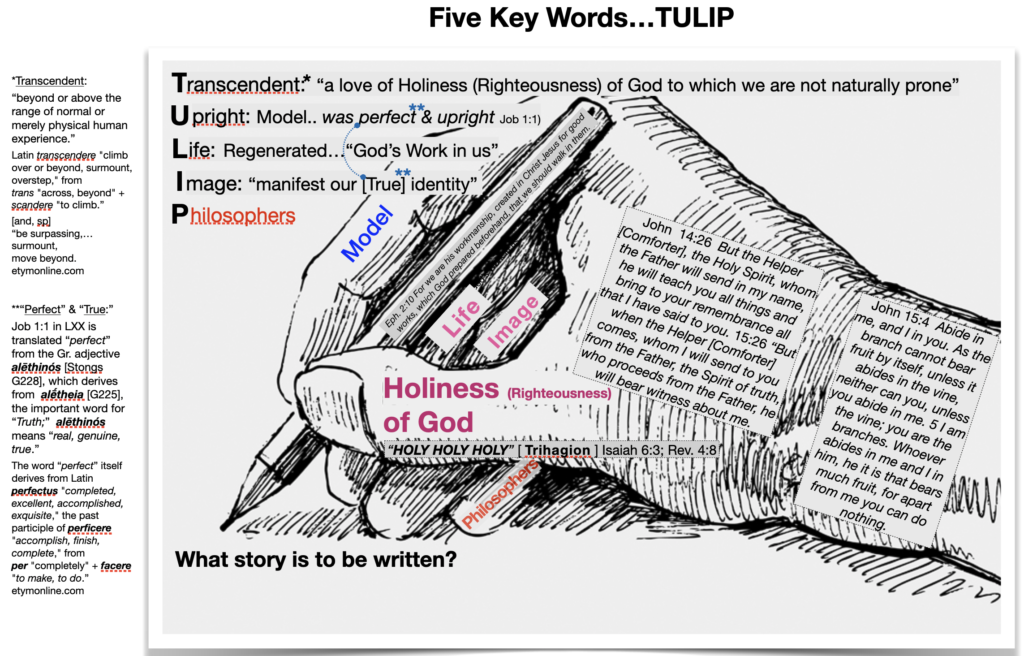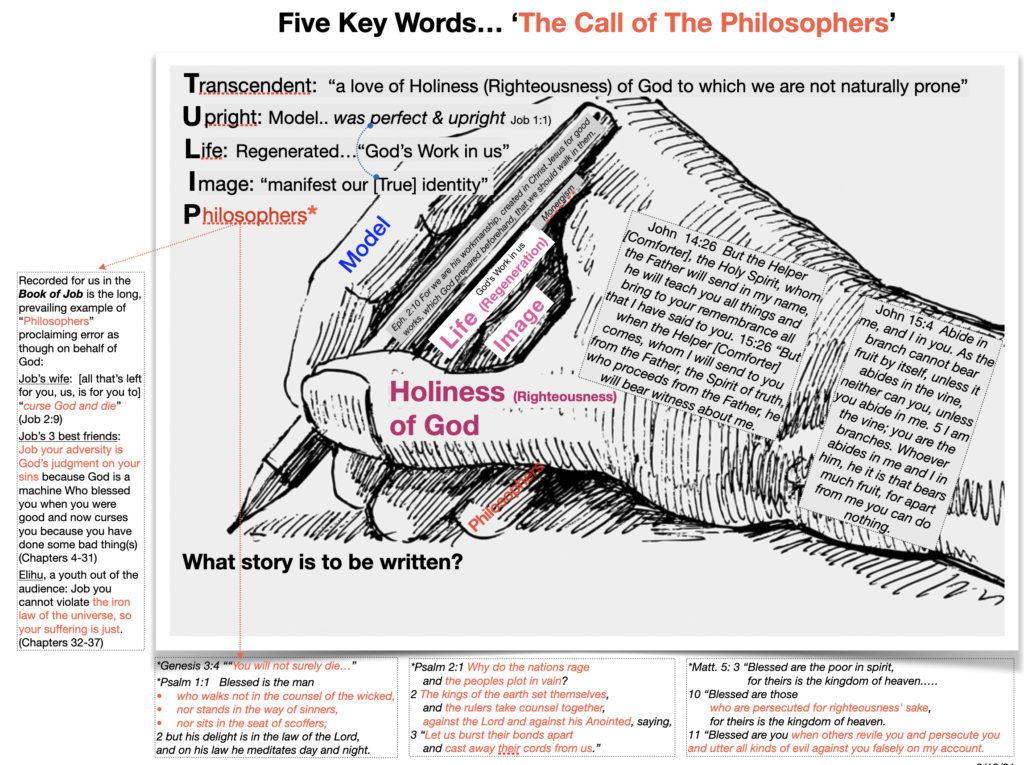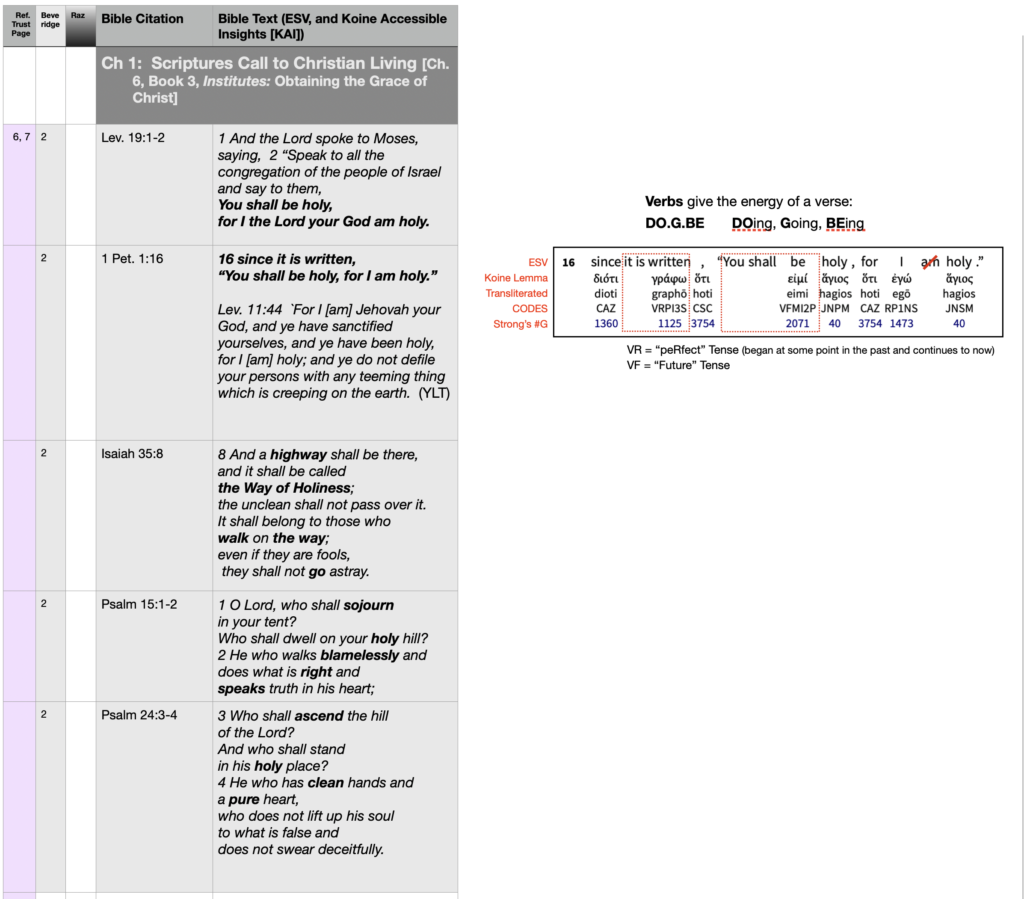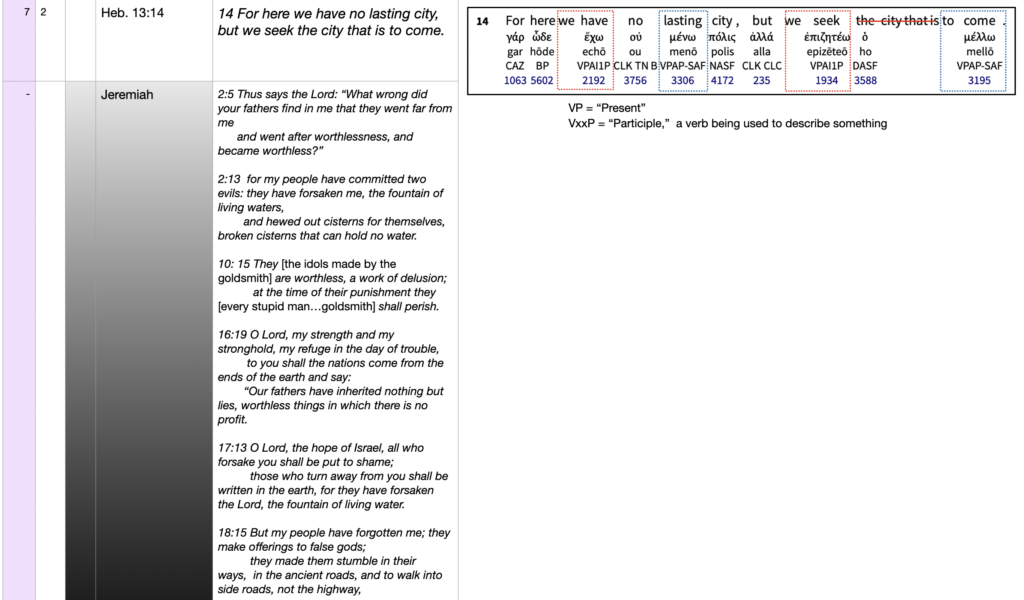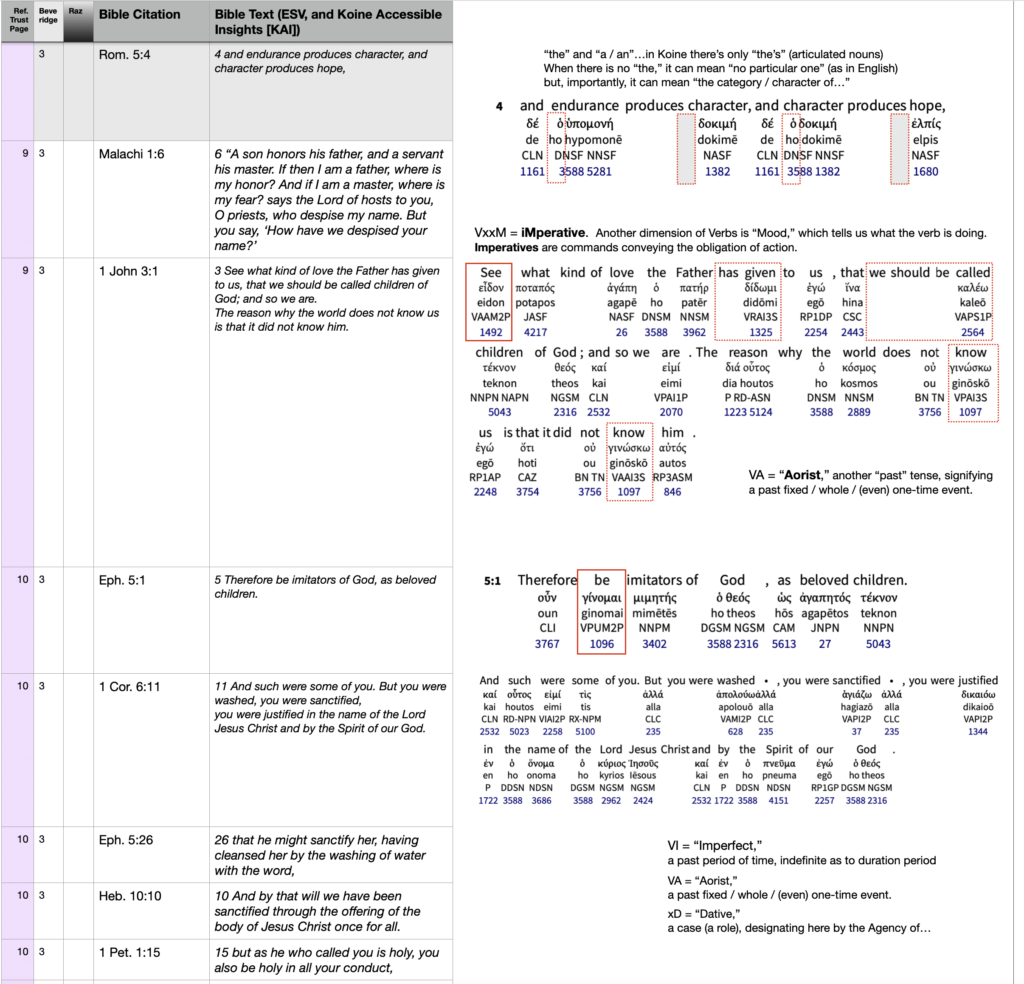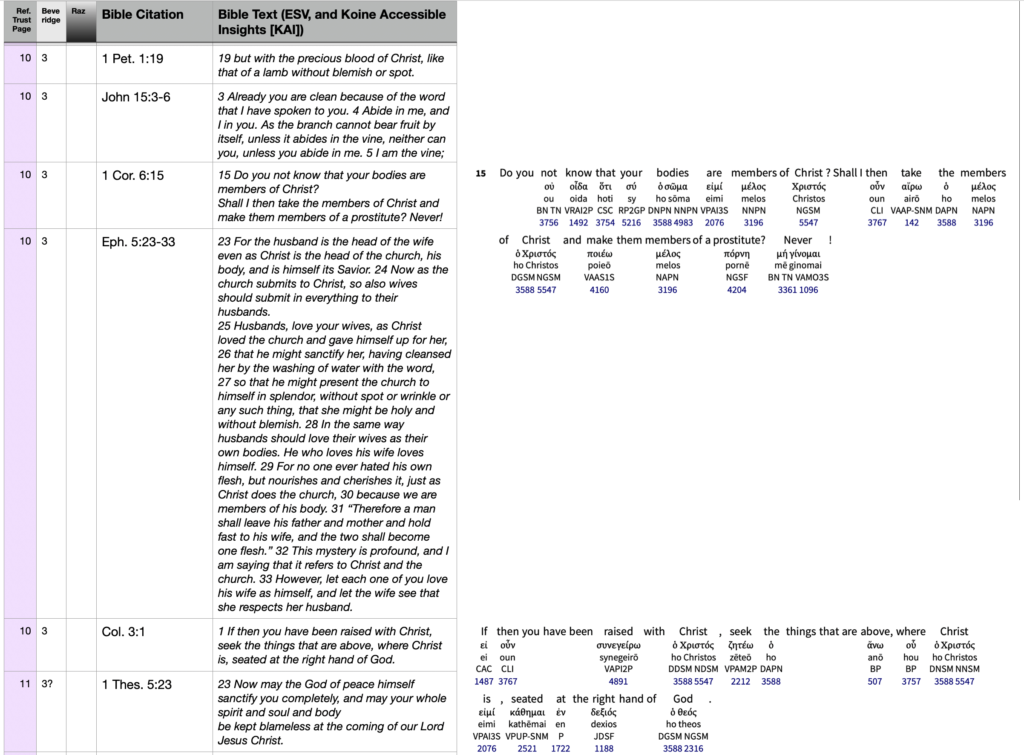2020 was the year, or perhaps just the first year of many more to come, of the worldwide attention to the power of an invisible internal virus, now designated COVID-19 (19 for the year, 2019, of its apparent origin).
But there is a far more sinister virus, with universal mortality with respect to Spiritual Life (Death #1) and ultimately with respect to biological life itself (Death #2), and beyond the end of space-time into eternal condemnation (Death #3). We don’t have a certain space-time date and time for the unleashing of such virus, but we have the name of the event: The Fall.
The Fog
Here, let us think about the thinking aspects and consequences of The Fall, which is a great fog in our mind and reasoning powers. Not a fog like the early morning kind after a cool night following a warm, humid day. This Fog-from-the-Fall is better symbolized by an absolute darkness and impenetrability of the ugliest, most pervasive fog conceivable.
Famed author Charles Dickens used the imagery of London fogs, which were legendary in their blackness and weight, in his books Christmas Carol (to represent the state of mind of the character Scrooge), and even more powerfully in his novel Bleak House (where first mud and then fog is used to represent the societal condition of Victorian England with mud portraying the implacable fixity of the times and fog the absolute insensibility of it):
LONDON. Michaelmas Term lately over, and the Lord Chancellor sitting in Lincoln’s Inn Hall. Implacable November weather. As much mud in the streets as if the waters had but newly retired from the face of the earth, and it would not be wonderful to meet a Megalosaurus, forty feet long or so, waddling like an elephantine lizard up Holborn Hill. Smoke lowering down from chimney-pots, making a soft black drizzle, with flakes of soot in it as big as full-grown snow-flakes gone into mourning, one might imagine, for the death of the sun. Dogs, undistinguishable in mire. Horses, scarcely better; splashed to their very blinkers. Foot passengers, jostling one another’s umbrellas in a general infection of ill-temper, and losing their foot-hold at street-corners, where tens of thousands of other foot passengers have been slipping and sliding since the day broke (if the day ever broke), adding new deposits to the crust upon crust of mud, sticking at those points tenaciously to the pavement, and accumulating at compound interest.
Fog everywhere. Fog up the river, where it flows among green aits and meadows; fog down the river, where it rolls defiled among the tiers of shipping and the waterside pollutions of a great (and dirty) city. Fog on the Essex marshes, fog on the Kentish heights. Fog creeping into the cabooses of collier-brigs; fog lying out on the yards, and hovering in the rigging of great ships; fog drooping on the gunwales of barges and small boats. Fog in the eyes and throats of ancient Greenwich pensioners, wheezing by the firesides of their wards; fog in the stem and bowl of the afternoon pipe of the wrathful skipper, down in his close cabin; fog cruelly pinching the toes and fingers of his shivering little prentice boy on deck. Chance people on the bridges peeping over the parapets into a nether sky of fog, with fog all round them, as if they were up in a balloon, and hanging in the misty clouds.
Gas looming through the fog in divers places in the streets, much as the sun may, from the spongey fields, be seen to loom by husbandman and ploughboy. Most of the shops lighted two hours before their time as the gas seems to know, for it has a haggard and unwilling look.
The raw afternoon is rawest, and the dense fog is densest, and the muddy streets are muddiest near that leaden-headed old obstruction, appropriate ornament for the threshold of a leaden-headed old corporation, Temple Bar. And hard by Temple Bar, in Lincoln’s Inn Hall, at the very heart of the fog, sits the Lord High Chancellor in his High Court of Chancery.
Never can there come fog too thick, never can there come mud and mire too deep, to assort with the groping and floundering condition which this High Court of Chancery, most pestilent of hoary sinners, holds this day in the sight of heaven and earth.
On such an afternoon, if ever, the Lord High Chancellor ought to be sitting her as here he is with a foggy glory round his head, softly fenced in with crimson cloth and curtains, addressed by a large advocate with great whiskers, a little voice, and an interminable brief, and outwardly directing his contemplation to the lantern in the roof, where he can see nothing but fog.
Charles Dickens, Bleak House, Opening paragraphs of Chapter 1 (highlights are mine)
The False Confidence
Even Dickens’s brilliantly despairing imagery does not begin to touch the comprehensiveness of the post-Fall human condition. We all know this, or think we do, because in our Fallenness we cling to the life raft that even if all may be lost, we still have our senses, and our reasoning, which can be, in the best of us, honed to give us clarity, understanding. After all, we are not mere beasts, we say of ourselves. We can reason with our senses even to the state of looking down upon ourselves, seeing ourselves, doing the reasoning, and so forth like a hall of mirrors. We have the belief that we can see, truly, and see that we are seeing, from such seeing of our seeing leading to ever better seeing, as a library of wisdom gets both larger and wiser with time and curation.
But such confidence is false.
The Old Testament is full of biographical examples of individuals, such as kings, and peoples, who reject the counsel of God-sent prophets who proclaim “Thus says the Lord…” (Ex 5:1; Josh 7:13; Judges 6:8; 1 Sam 2:27; 2 Sam 24:12). The very disciples of Jesus were (mostly) utterly clueless, and worse–speaking the very words of Satan himself (Matt. 16:23; Mark 8:33). At the culmination of Jesus Christ’s public ministry, the very keepers of the Tablets of the Law, and the Temple with its Holy of Holies and its Mercy Seat, rejected with condemnation and contempt God Himself, joined by the subservient and clueless political system of its day in effecting His crucifixion and public shaming as the lowest of the low.
We are, by our Fog of the Fall nature, just the same.
The Five Fatal Errors of the Fog of the Fall
The deepest issue for natural man stems from this question: what is my condition, with respect to ultimate reality? With newborns, OBGYN’s perform an Apgar Test as a proxy of fixing the infant’s initial biological condition. Blood “panels” of dozens of measurements given another such answer. But is that all there is? Just biology?
Parents are always relieved as they learn, in most cases, that everything is “fine,” the baby is “healthy.” But there is something else present, that we all intrinsically know, and will ultimately all evidence, that is not “fine,” and certainly not even close to “fine” with respect to the Holiness of God.
What’s Our True Condition with Respect to God’s Holiness and Our Fallenness?
1 We do not know the true situation of ultimate reality, and our condition.
2 We do not know that we do not know (see #1)
3 What we ‘know’ is false
4 What we do not know is that which we ‘know’ is false (see #3)
5 We do not know that we are unable to self-correct our lack of knowing, or our false ‘knowing’
And the ultimate, and tragic irony, is that we, in Adam, and Eve, sought “the knowledge” of that tree of knowledge of Good and Evil. Like the ancient curse of the all powerful evil one, that which he offers, and gives, carries with it the opposite. So with such “knowledge” came the most awful fog, the utter inability to know which is good and which is evil with respect to God, and the incapacity to choose the good.
The COVID-19 Virus
The year 2020 was a maelstrom of new observations and research activity. With it, came a flood of new words into our lexicons. Here are some examples from various 2021 issues of SCIENCE, the Journal of the American Academy of Science:
- The corona (literally, “crown” which conveys, unintentionally, rule) virus
- Cognitive impairment, weakness, dysfunction, decline
- Attention deficiencies: decline in executive function, planning, thinking
- Brain ‘fog’: trouble thinking concentrating, remembering,
- Post-intensive syndrome
- Brain damage
- Neurological damage
- Tissue / Organ inflammation
- Sensory loss: taste, smell, etc.
- Exhaustion
- Sleep impairment
- SAD: Stress, Anxiety, Depression
- Hopelessness
- mRNA, messenger RNA (a type of DNA), that delivers vaccines into every cell of one’s body
- The transformation of one’s being: the sensation that “I’m not the same person” (as I was before COVID)
- “Long Haul,” “Long Duration,” COVID (or “Long COVID”) referencing slow, or no, recovery
- Viral pneumonia and respiratory tract infection, failure
- Viral infected epithelial cells
- Pulmonary infiltrates
- Seizures
- “The virus acts like no pathogen humanity has ever seen”
- Viral hijacking of the machinery of the body’s cells
- Disastrous immune response (chemokines that kill the cells themselves, leaving fluids and pus)
- Lungs riddled with with opacity (filling what should be open spaces)
- Detritus of destroyed cells (in the lungs)
- Attack upon all the major organs of the body: brain, eyes, nose, lungs, heart, blood vessels, liver, kidneys, and intestines.
The Virus of the Fog-of-the Fall
The COVID-19 virus itself is not always fatal, nor even seriously debilitating in every case. The virus stemming from the Fall has this morbidity statistic: 100%, or more simply…one out of one dies.
But prior to that final fatal moment, there is another 100% form of death: our desire toward God, our Creator, and to Whom we are utterly and finally accountable.
And for this virus, there is no vaccine. We all get it, as will all our offspring.
But there is a cure.
Below is God’s story of “Life” regeneration, from the Gospel of John. It’s a multi-page pdf, so be sure to scroll down through all the pages to see the whole of the story.

